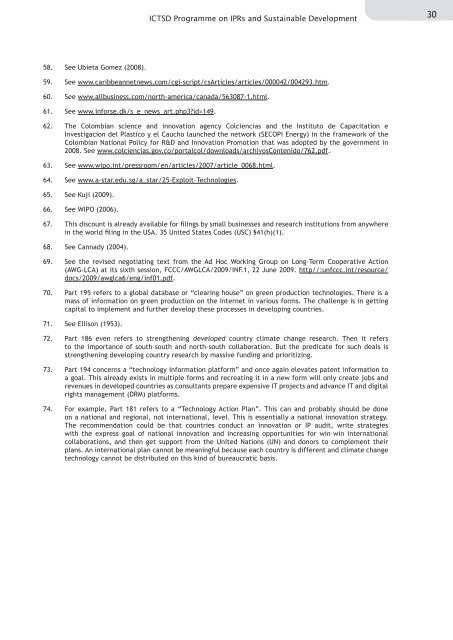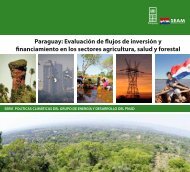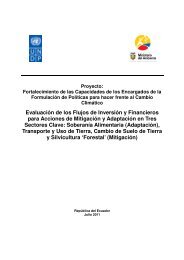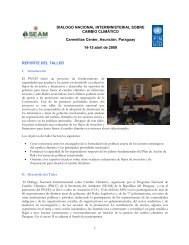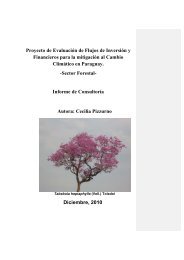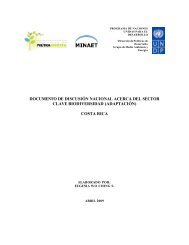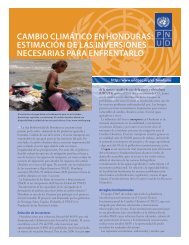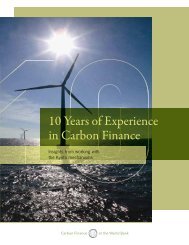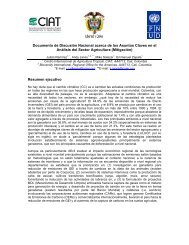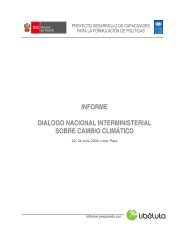View Publication - UNDPCC.org
View Publication - UNDPCC.org
View Publication - UNDPCC.org
You also want an ePaper? Increase the reach of your titles
YUMPU automatically turns print PDFs into web optimized ePapers that Google loves.
ICTSD Programme on IPRs and Sustainable Development<br />
30<br />
58. See Ubieta Gomez (2008).<br />
59. See www.caribbeannetnews.com/cgi-script/csArticles/articles/000042/004293.htm.<br />
60. See www.allbusiness.com/north-america/canada/563087-1.html.<br />
61. See www.inforse.dk/s_e_news_art.php3?id=149.<br />
62. The Colombian science and innovation agency Colciencias and the Instituto de Capacitation e<br />
Investigacion del Plastico y el Caucho launched the network (SECOPI Energy) in the framework of the<br />
Colombian National Policy for R&D and Innovation Promotion that was adopted by the government in<br />
2008. See www.colciencias.gov.co/portalcol/downloads/archivosContenido/762.pdf.<br />
63. See www.wipo.int/pressroom/en/articles/2007/article_0068.html.<br />
64. See www.a-star.edu.sg/a_star/25-Exploit-Technologies.<br />
65. See Kuji (2009).<br />
66. See WIPO (2006).<br />
67. This discount is already available for filings by small businesses and research institutions from anywhere<br />
in the world filing in the USA. 35 United States Codes (USC) §41(h)(1).<br />
68. See Cannady (2004).<br />
69. See the revised negotiating text from the Ad Hoc Working Group on Long-Term Cooperative Action<br />
(AWG-LCA) at its sixth session, FCCC/AWGLCA/2009/INF.1, 22 June 2009. http//:unfccc.int/resource/<br />
docs/2009/awglca6/eng/inf01.pdf.<br />
70. Part 195 refers to a global database or “clearing house” on green production technologies. There is a<br />
mass of information on green production on the Internet in various forms. The challenge is in getting<br />
capital to implement and further develop these processes in developing countries.<br />
71. See Ellison (1953).<br />
72. Part 186 even refers to strengthening developed country climate change research. Then it refers<br />
to the importance of south–south and north–south collaboration. But the predicate for such deals is<br />
strengthening developing country research by massive funding and prioritizing.<br />
73. Part 194 concerns a “technology information platform” and once again elevates patent information to<br />
a goal. This already exists in multiple forms and recreating it in a new form will only create jobs and<br />
revenues in developed countries as consultants prepare expensive IT projects and advance IT and digital<br />
rights management (DRM) platforms.<br />
74. For example, Part 181 refers to a “Technology Action Plan”. This can and probably should be done<br />
on a national and regional, not international, level. This is essentially a national innovation strategy.<br />
The recommendation could be that countries conduct an innovation or IP audit, write strategies<br />
with the express goal of national innovation and increasing opportunities for win–win international<br />
collaborations, and then get support from the United Nations (UN) and donors to complement their<br />
plans. An international plan cannot be meaningful because each country is different and climate change<br />
technology cannot be distributed on this kind of bureaucratic basis.


